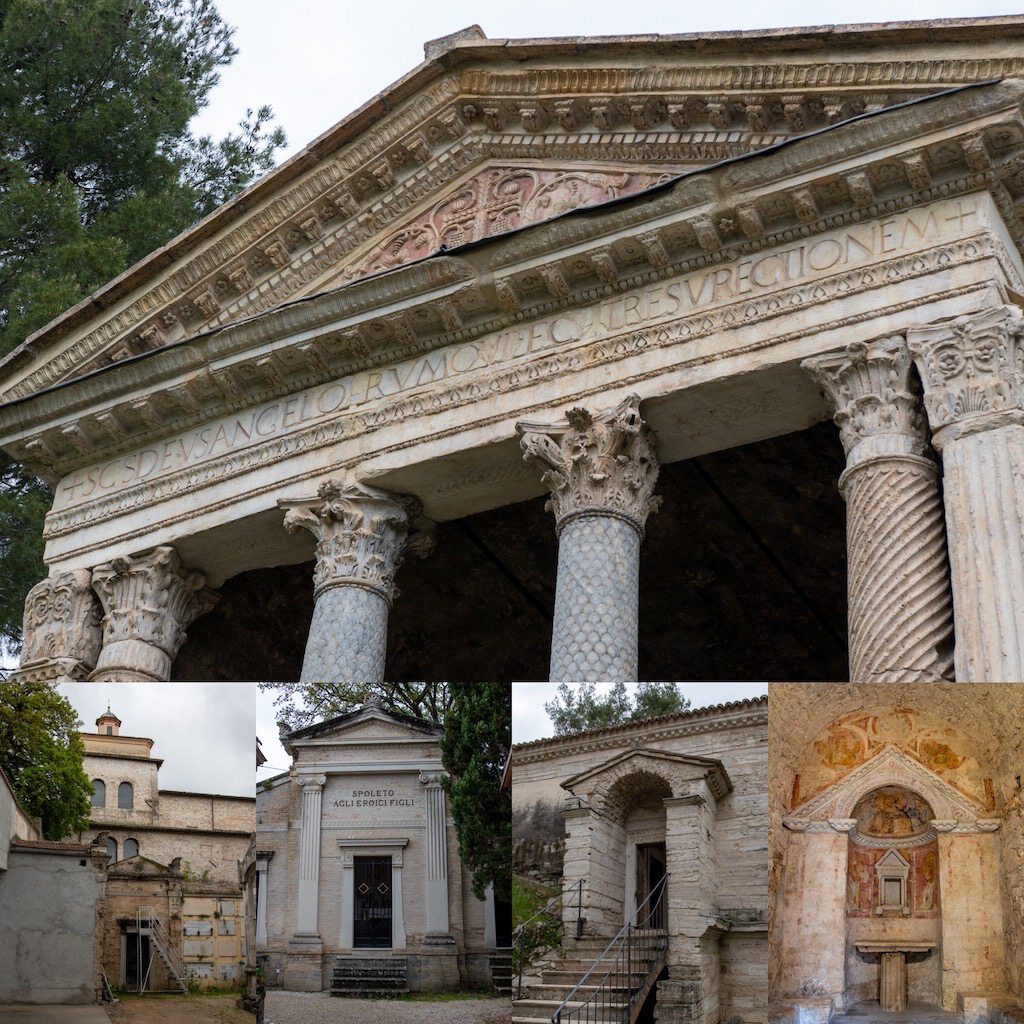Date of visit:May 4, 2019, approximately 12:00 p.m.
There are many world heritage sites in Italy, but I think this one is quite maniacal and not many people go there. The place is in the suburbs of the city called Spoleto in Umbria.
An important asset that conveys the changing architectural styles from ancient times to the Middle Ages
The Longobards were a Germanic people who ruled the Italian peninsula from the 6th to the 8th century.
When they took control of Italy, they converted it to Christianity and built many religious buildings throughout Italy. This style of architecture was recognized as a UNESCO World Heritage Site in 2011, because it combines the characteristics of Roman, Byzantine, and Germanic styles of northern Europe, as well as the spirituality of Christianity, and is considered to be extremely rare because it well conveys the architectural style that changed from ancient times to the Middle Ages. It was declared a UNESCO World Heritage Site in 2011.
This World Heritage Site is made up of several monuments. In this trip, we visited two of them, the Basilica of San Salvatore and the Small Temple of Critunno, both located around Spoleto in Umbria. However, to be precise, we were only able to see the small temple of Critunno. I will describe them below.
The Basilica of San Salvatore, wandering the cemetery, but not getting close enough…
The Basilica of San Salvatore is located on the outskirts of Spoleto and was included in the constituent properties as a good example of an urban basilica for the Longobard elite. This was our next stop after leaving the beautiful village of Norcia. We were able to find it on Google Maps and get close to it, but the last road to the basilica was blocked by a landslide or under construction, so we couldn’t get close to it.
Somehow I found a good space for parking behind a guardrail nearby the basilica, nevertheless we couldn’t find a way to get there on foot even though we could see it!

However, the cemetery, which was supposed to be a component of the site, was opened, so we entered there and tried to approach from the basilica, but the cemetery was so big and wide that we couldn’t reach the basilica.

However, this cemetery was quite interesting because there were many large tombs, tombs that looked like houses, and here was like a city.

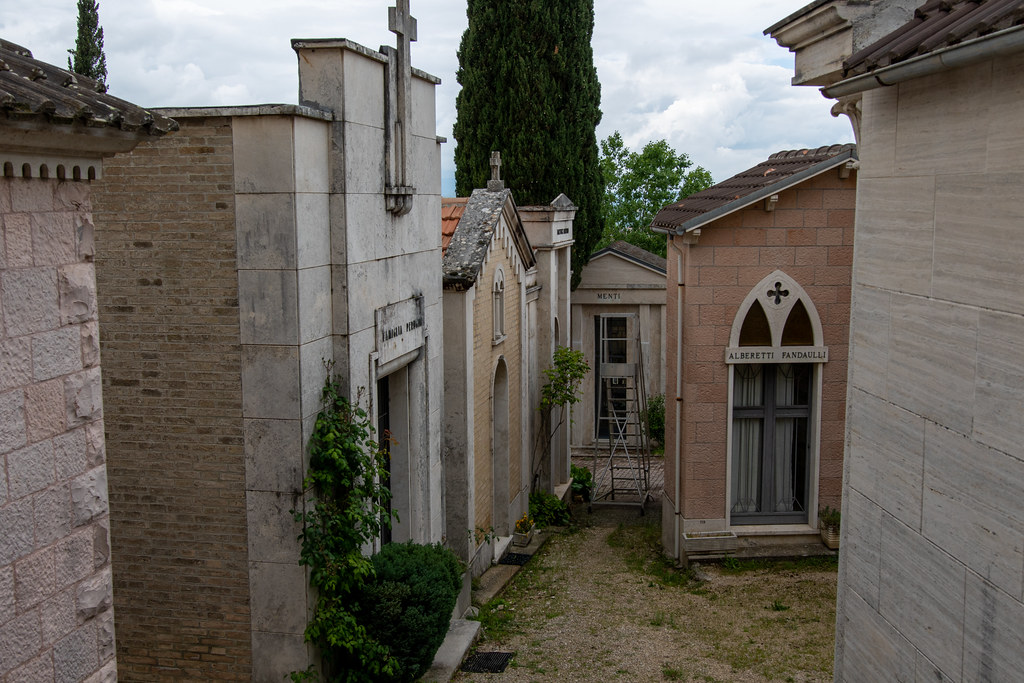

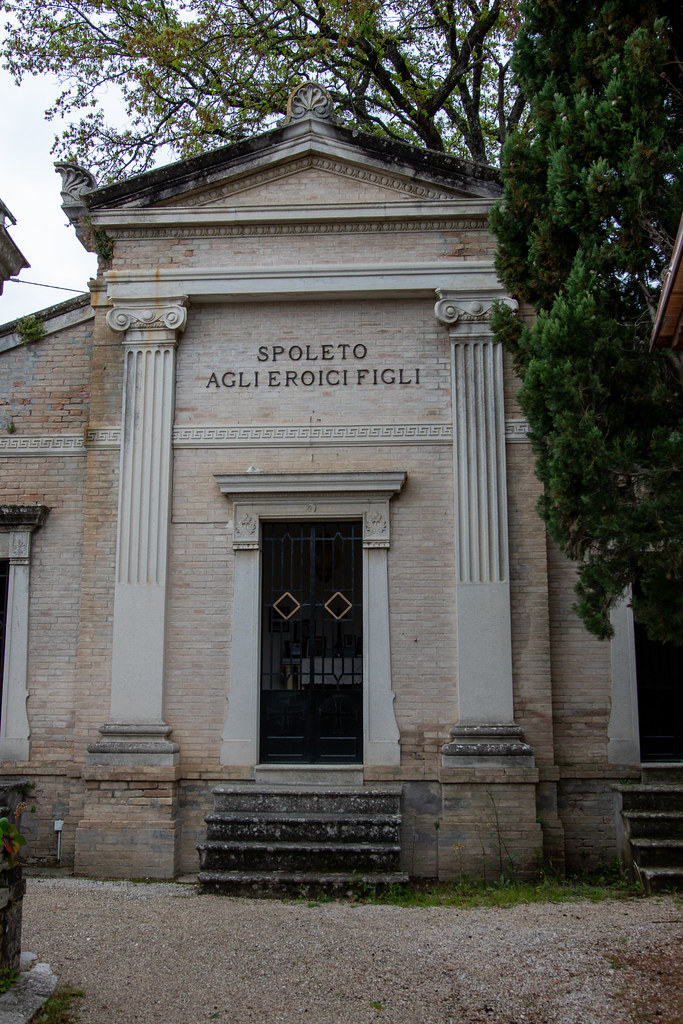

We were really enjoyed it although we wondered why the cemetery was so magnificent. In the meantime, we found there was no one around, maybe because it was lunch time. So we left here.
Small Temple of Kritunno
On the other hand, I did visit the little temple of Clitunno, north of Spoleto. It’s on its way from Spoleto to Assisi. We could find the road quickly, but not the temple early on. In particular, it was difficult to find a parking nearby it because it was on the west side of the road, that is, an opposite side of the road as we were driving in the north direction. Therefore, to get to this parking space, we had to turn and go back to the south from the north towards Spoleto, as the road was too big and traffics were too crowded for me to go across the road to the opposite side directly.
I parked my car in the parking space somehow, and followed the signs to the temple. There was a small hut at the entrance where we were supposed to pay the entrance fee and go inside, but I didn’t see any sign of people, almost making me wonder if there was really an attendant here. However, when we approached, we found it was open and we could see the small temple after paying the entrance fee of 3 euros.

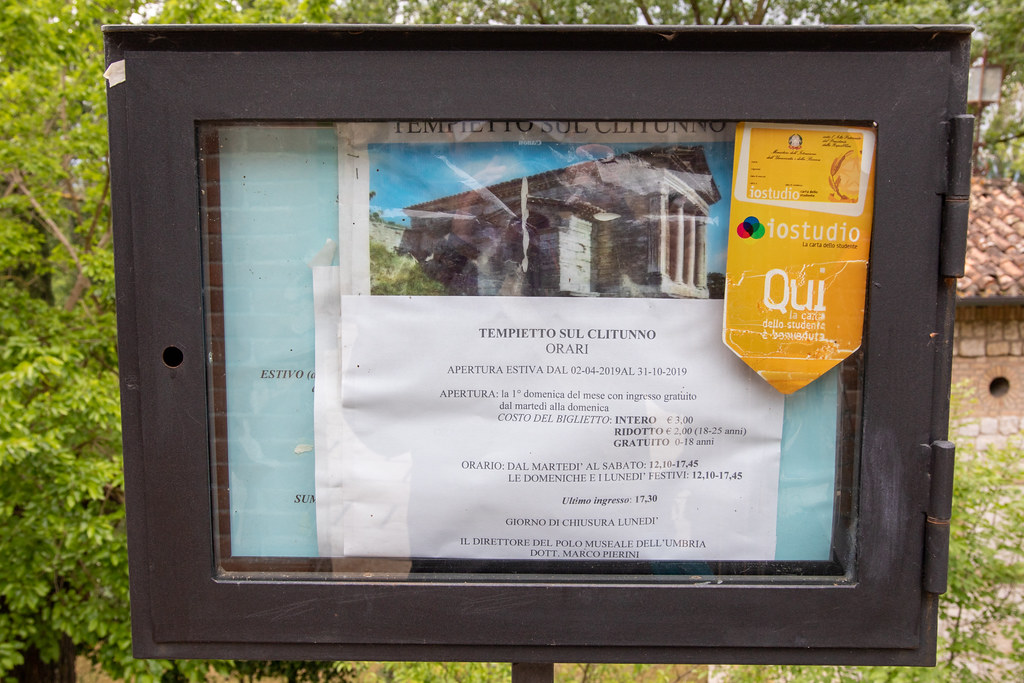
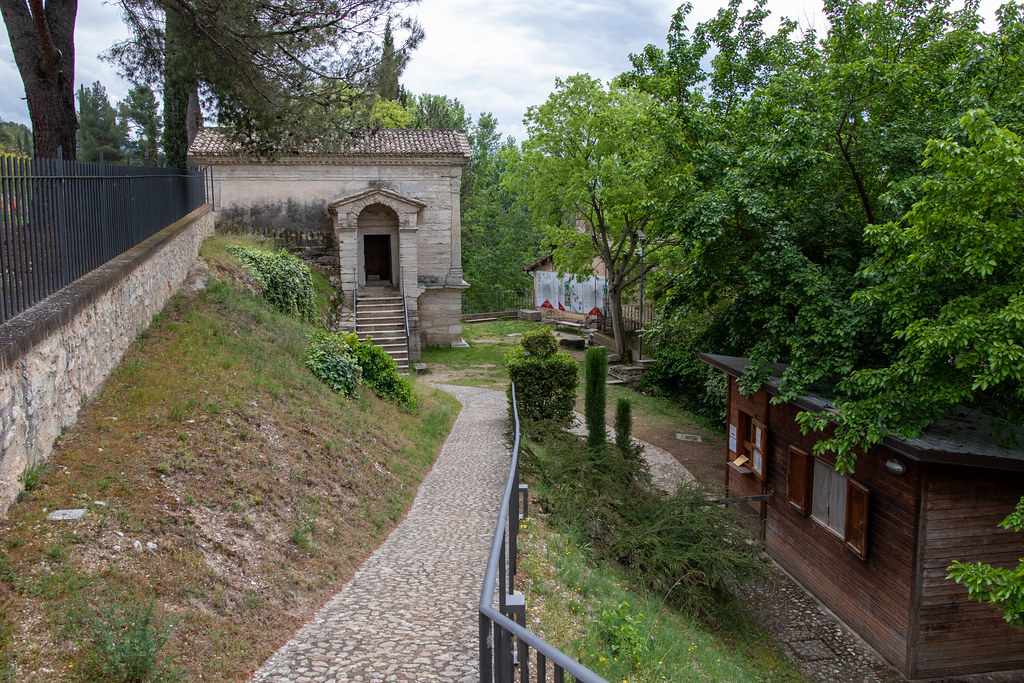
This small temple was small in size. It looked vaguely Greek and vaguely Roman. However, after further inspection, I questioned why it appeared to belong to either of those two.
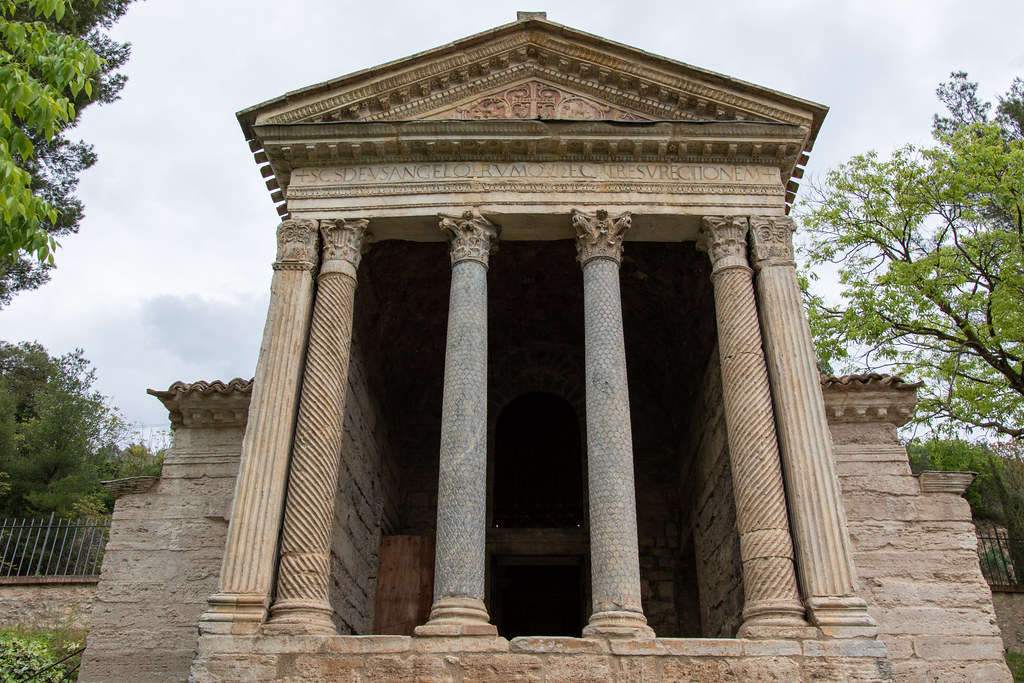
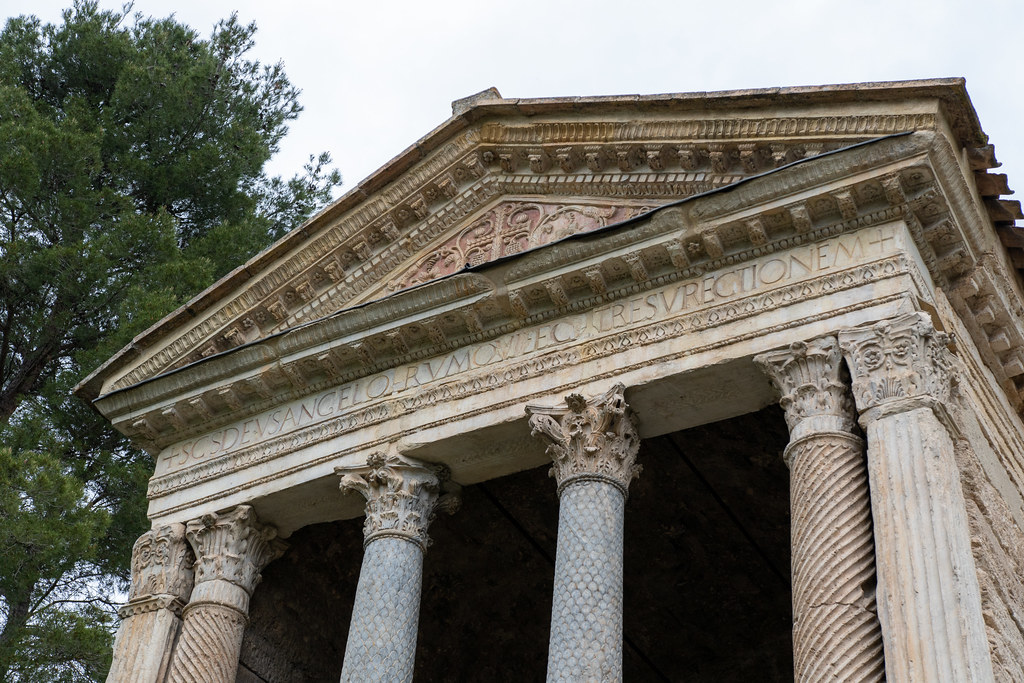

It is indeed a Christian building. The icon of Christ is clearly depicted in the center of the interior.


As I recall, I had never seen a temple with an icon of Christ on it.
Configuration assets that could not be found on the web still exist
Facing the temple, there was a panel explaining all the registered properties of the World Heritage Site “The Longobards of Italy: Footprints of Power”.
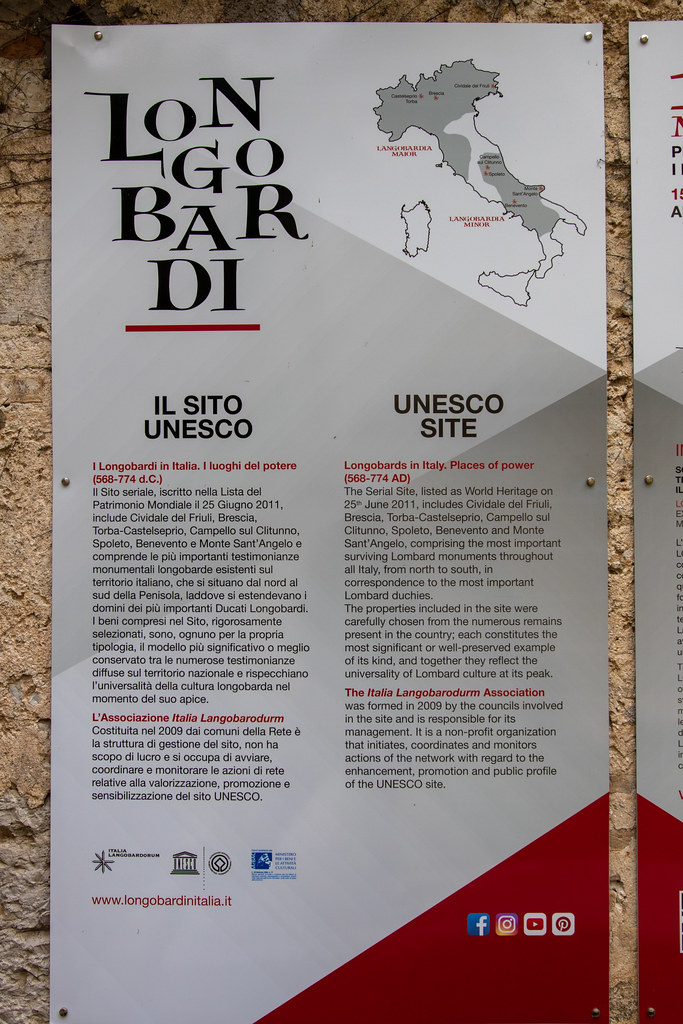


From this panel, we found that there were quite a few constituent assets that were not listed in the Japanese Wikipedia. Among them, there were some assets that I couldn’t find on the web, and there were also some around Spoleto. However, except for the Basilica di San Salvatore and the small temple of Critunno, I gave up to visit them because they were located in the suburbs and the road seemed to be steep.
In addition to Umbria, there are other regions that are included in the World Heritage List. It is spread widely from Udine in the north to Puglia in the south. If I have a chance to go near there in the future, I would like to stop by. The registered properties in Lombardy are large in scale and seem to be worth seeing. The one around Spoleto, which I visited this time, seems to be the smallest one among the constituent heritage.
It was a very humble World Heritage site, but I was quite satisfied.
